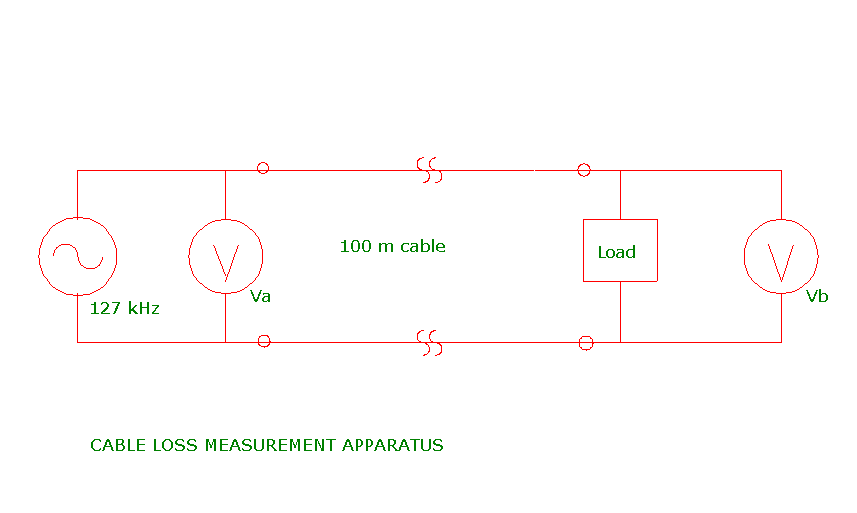
| Home | Lighting Control | Nuclear Power | Contacts | Links |
|---|
Data supplied by Systel indicates that at 100 kHz, the impedance of one Systel 2 lamp 70 watt ballast is 380 0hms inductive. Thus three such ballasts connected in parallel have an impedance of 380 / 3 = 127 ohms inductive. The corresponding inductance value is given by:
127 / (6.28 X 10^5) = 202 uH.
Hence three parallel connected ballasts have about the same impedance as two series connected 100 uH inductors.
At low frequencies the same three ballasts at full load draw 3 X 70 = 210 watts. The equivalent resistance of these three parallel connected ballasts is given by: R = V^2/P = (120)^2/210 = 68.6 ohms. This resistance can be approximately simulated by two series connected 36 ohm resistors.
We can conduct cable attenuation tests using a measured 100 m length of #14 2 wire (plus ground) 3/8 inch diameter armour cable.

Thus, by using various terminations consisting of series/parallel combinations of 4 100 uH inductors and 4 36 ohm resistors, at 127 kHz we can prepare a table of the following form:
| Termination------ | Equiv.No. of Ballasts------ | Transfer Ratio = Vb / Va | ||
|---|---|---|---|---|
| 200 uH | 3 | |||
| 100 uH | 6 | |||
| 66.67 uH | 9 | |||
| 50 uH | 12 | |||
| 40 uH | 15 | |||
| 33.3 uH | 18 | .439 | ||
| 25 uH | 24 | .382 | ||
| 72 R | 3 | |||
| 36 R | 6 | |||
| 24 R | 9 | |||
| 18 R | 12 | |||
| 14.4 R | 15 | |||
| 12 R | 18 | |||
| 9 R | 24 | .234 |
| Home | Lighting Control | Nuclear Power | Contacts | Links |
|---|